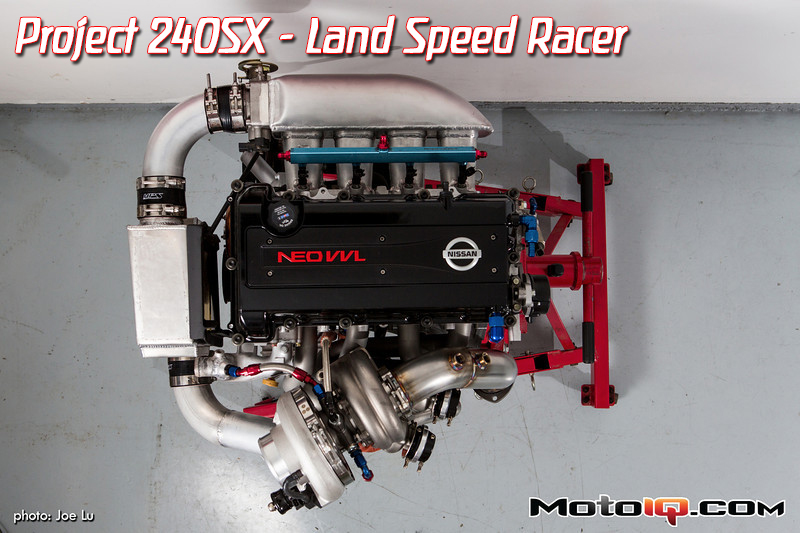The Heart of a Record Breaker Part I: Enter the SR15VET 20V
In the last three years, it seems that I've said it over a thousand times. When it comes to land speed racing, take most everything you know about racing and throw it away. There are so many generally accepted practices in motorsports and preconceived notions about racing that just don't apply when it comes to land speed racing. In fact, much of the time these common practices are the polar opposite of the practices standard to that of building a car for Bonneville. Land speed racing is the realm of motorsports where lead weights are added to cars, wide tires are replaced with skinny ones, and the thought of replacing the factory brakes with an exotic multi-piston brake kit is considered to be a foolish investment.

After smashing just about every record in the “G” and “F” engine classes, Doug and Miriam Macmillan of Team Hondata decided to build a de-stroked K20 (K15) so they could claim a whole new set of records.
In the same sense, where most racers would consider changes in displacement only in one direction (larger), the land speed racer will do whatever it takes to set a land speed record even if it means decreasing an engine's displacement. Why did we choose this route though?

Winston Churchill once said, “Seize the opportunity in every difficulty.” Well, our difficulties started while going through tech inspection during the last race of the season at El Mirage. See, up until that point we had been chasing the G-BGC (1.51 L to 2.0 L Blown, Gas, Coupe) record. And, one of the stipulations to run in that particular class is an engine swap. No problem right? We swapped an SR20DET into a 240SX. Wrong! Apparently, in the eyes of the SCTA we essentially just recreated a Japanese spec car (a late model 180SX). Long story short, this placed us back in the Production class… where the record was over 226 MPH! Shit.
 Producing over 900 WHP, the Raver Motorsports Mitsubishi Galant VR4 has set G/PS records in excess of 220 MPH at both Bonneville and El Mirage. Photo courtesy of Vernon Brunges.
Producing over 900 WHP, the Raver Motorsports Mitsubishi Galant VR4 has set G/PS records in excess of 220 MPH at both Bonneville and El Mirage. Photo courtesy of Vernon Brunges.
Here's where “seizing the opportunity in every difficulty” comes into play… although I would like to think of it as shear brilliance. The record in the production class for a 1.51 L to 2.0 L was 226 MPH by an AWD Galant and the other an AWD Audi. The Production class is the only place an AWD car is allowed to compete since it provides such a distinct advantage. However, for a 1.0 to 1.5L engine, the Production class record remained a more reasonable 167 MPH at Bonneville and 135 MPH at El Mirage. Inspiration! We'll simply reduce the SR20DET's displacement. Necessity is the mother of invention isn't it?
 Look at the miniscule distance between TDC and BDC. This surely isn't 86 MM of stroke!
Look at the miniscule distance between TDC and BDC. This surely isn't 86 MM of stroke!
Removing 25% or one cylinder's worth of displacement from an engine is easier said than done though. My first instinct was to have some custom sleeves made to decrease the bore to 83.0 MM and use an SR16VE crankshaft with 68.7 MM of stroke. It seemed easy enough, but there were actually many complications and disadvantages that came along with it. The result of de-boring the cylinders would leave a step where the 86mm diameter combustion chambers met the smaller 83.0 mm bore sleeves. This wasn't exactly ideal for the translation of combustion pressures into the rotating assembly. Also, this mismatch in diameters would require that notches be machined into the smaller sleeves to ensure proper valve clearance and even then the flow would most likely be shrouded by the smaller diameter bores. And what about the head gasket? These were just a few of the challenges… It was time to focus our attention on modifying the crankshaft instead.




